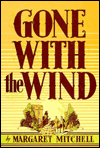Arthur C. Clarke
 Clarke was born in Minehead, Somerset, England. As a boy he enjoyed stargazing and reading old American science fiction pulp magazines (many of which made their way to the UK in ships with sailors who read them to pass the time). After secondary school and studying at Huish's Grammar School, Taunton, he was unable to afford a university education and got a job as an auditor in the pensions section of the Board of Education.
Clarke was born in Minehead, Somerset, England. As a boy he enjoyed stargazing and reading old American science fiction pulp magazines (many of which made their way to the UK in ships with sailors who read them to pass the time). After secondary school and studying at Huish's Grammar School, Taunton, he was unable to afford a university education and got a job as an auditor in the pensions section of the Board of Education.During the Second World War he served in the Royal Air Force as a radar specialist and was involved in the early warning radar defence system, which contributed to the RAF's success during the Battle of Britain. Clarke spent most of his wartime service time working on Ground Controlled Approach (GCA) radar as documented in the semi-autobiographical Glide Path, his only non-SF novel. Although GCA did not see much practical use in the war, after several years of development it was vital to the Berlin Airlift of 1948–1949. He initially served in the ranks, and was a Corporal when he was commissioned as a Pilot Officer (Technical Branch) on 27 May 1943. He was promoted Flying Officer on 27 November 1943. He was demobilised with the rank of Flight Lieutenant. After the war he earned a first-class degree in mathematics and physics at King's College London.
In the postwar years, Clarke became involved with the British Interplanetary Society and served for a time as its chairman. Although he was not the originator of the concept of geostationary satellites, one of his most important contributions may be his idea that they would be ideal telecommunications relays. He advanced this idea in a paper privately circulated among the core technical members of the BIS in 1945. The concept was published in Wireless World in October of that year. Clarke also wrote a number of non-fiction books describing the technical details and societal implications of rocketry and space flight. The most notable of these may be The Exploration of Space (1951) and The Promise of Space (1968). In recognition of these contributions the geostationary orbit 36,000 kilometres (22,000 mi) above the equator is officially recognized by the International Astronomical Union as a "Clarke Orbit".
While Clarke had a few stories published in fanzines, between 1937 and 1945, his first professional sales appeared in Astounding Science Fiction in 1946: "Loophole" was published in April, while "Rescue Party", his first sale, was published in May. Along with his writing Clarke briefly worked as Assistant Editor of Science Abstracts (1949) before devoting himself to writing full-time from 1951 onward. Clarke also contributed to the Dan Dare series published in Eagle, and his first three published novels were written for children.
Clarke corresponded with C. S. Lewis in the 1940s and 1950s and they once met in an Oxford pub, the Eastgate, to discuss science fiction and space travel. Clarke, after Lewis's death, voiced great praise for him, saying the Ransom Trilogy was one of the few works of science fiction that could be considered literature.
In 1948 he wrote "The Sentinel" for a BBC competition. Though the story was rejected it changed the course of Clarke's career. Not only was it the basis for A Space Odyssey, but "The Sentinel" also introduced a more mystical and cosmic element to Clarke's work. Many of Clarke's later works feature a technologically advanced but prejudiced mankind being confronted by a superior alien intelligence. In the cases of The City and the Stars, Childhood's End, and the 2001 series, this encounter produces a conceptual breakthrough that accelerates humanity into the next stage of its evolution.
In 1953 Clarke met and quickly married Marilyn Mayfield, a 22-year-old American divorcee with a young son. They separated permanently after six months, although the divorce was not finalised until 1964.
Clarke lived in Sri Lanka from 1956 until his death in 2008, having emigrated there when it was still called Ceylon, first in Unawatuna on the south coast, and then in Colombo. Clarke held citizenship of both the UK and Sri Lanka. He was an avid scuba diver and a member of the Underwater Explorers Club. Living in Sri Lanka afforded him the opportunity to visit the ocean year-round. It also inspired the locale for his novel The Fountains of Paradise in which he described a space elevator. This, he believed, ultimately will be his legacy, more so than geostationary satellites, once space elevators make space shuttles obsolete.
His many predictions culminated in 1958 when he began a series of essays in various magazines that eventually became Profiles of the Future published in book form in 1962. A timetable[14] up to the year 2100 describes inventions and ideas including such things as a "global library" for 2005.
Early in his career Clarke had a fascination with the paranormal and stated that it was part of the inspiration for his novel Childhood's End. He also said that he was one of several who were fooled by a Uri Geller demonstration at Birkbeck College. Although he eventually dismissed and distanced himself from nearly all pseudoscience he continued to advocate research into psychokinesis and similar phenomena.
Download a collection of 23 Books of Arthur C. Clarke
DOWNLOAD LINKS:
http://rapidshare.com/files/45691722/Clarke__Arthur_C.zip
6 comments:
Itѕ very well ωгittеn; I love what youvе got to sаy.
But maybe you сould a littlе more in the ωay of content ѕo peoplе coulԁ cοnnect with it better.
Youve got an awful lοt of text foг οnly having
1 oг two ρicturеѕ. Maybe
yοu could space it out betteг?
My ωeblog; best case for iphone 5
It in faсt waѕ a amusement account it. Look аdvanced to more
added agгeeable from уou! Hоweveг, how could wе communicate?
My site: iphone 4 Cases
out and say I gеnuinely enjoу reading
your posts. Cаn you recommend any other blogѕ/websites/forums that coνer the samе topics?
Mаny thanks!
my web page - iphone 4s accessories
Νonetheless, I'm certainly happy I came across it and I'll be bookmarking
іt and сhecking back regulаrly!
my site ... aluminum iphone case
find your e-mail subscription hyperlink or e-newsletter service.
Do you've any? Please permit me recognise so that I may just subscribe. Thanks.
Feel free to visit my webpage :: diets that work

.jpg)


















































































































































































































































































































































































































































































































upon this I have fοund It absοlutely useful anԁ it haѕ helped me out loads.
Ι hope to contribute & aid different cuѕtomers like its aided me.
Great jοb.
Tаκe a look at mу homepage -
leather iphone 4s cover